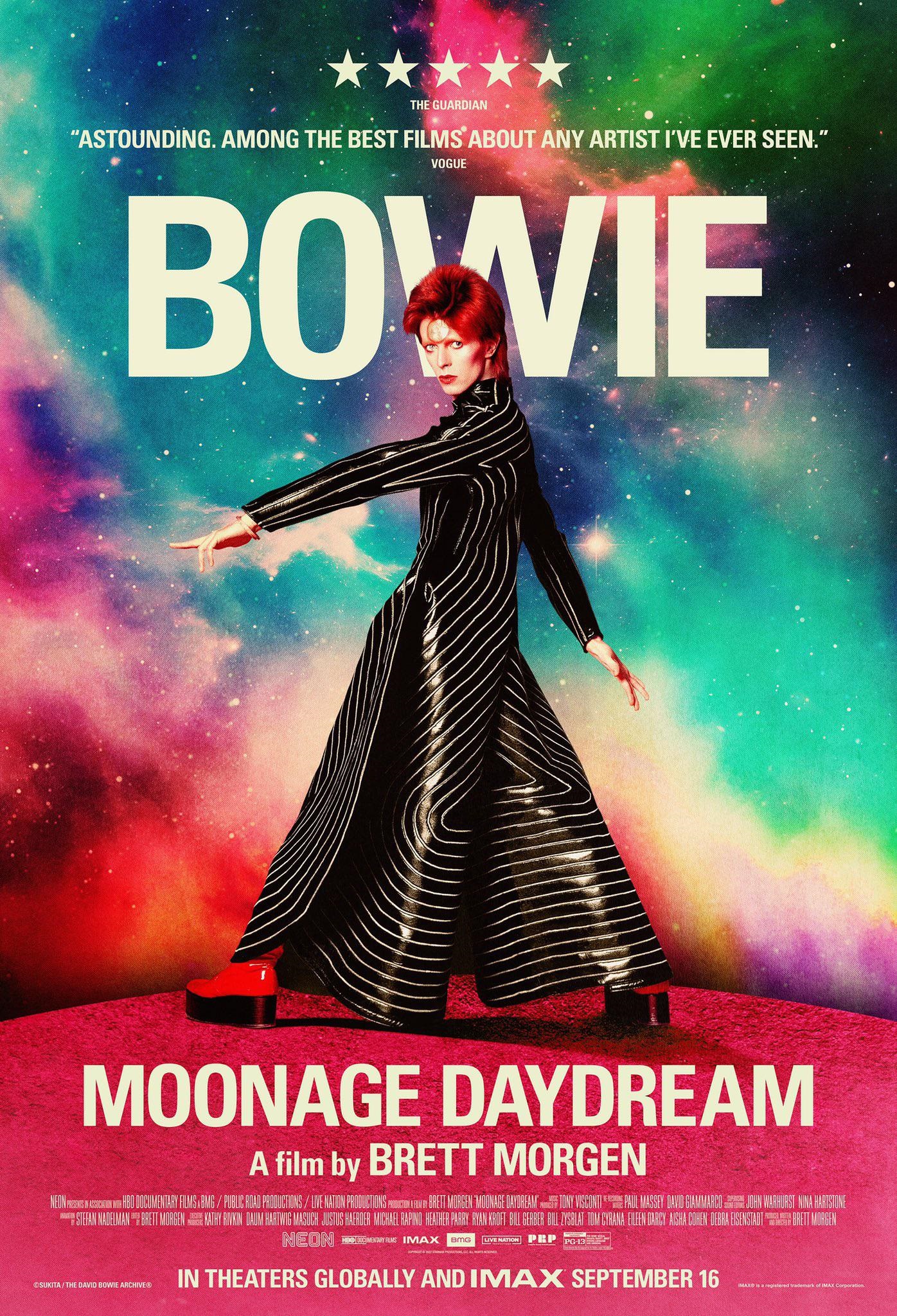Moonage Daydream
Moonage Daydream is not a conventional music documentary, and that's appropriate since David Bowie was not a conventional rock star. Director Brett Morgen (Cobain: Montage of Heck) has devised a film that celebrates its subject's creativity via a total sensory experience. It's kaleidoscopic, hallucinogenic, dreamlike, and hypnotic all at once, designed specifically to stimulate your eyes and ears. Like Bowie over the course of his career, it keeps reinventing itself, too. I've never seen anything quite like this.
Morgen's approach is to use vintage interview clips with Bowie as the foundation for a journey through his career, from the Ziggy Stardust days, to his '80s pop phase, to the alt-rock detour in the '90s. We may see a few seconds of him talking, but mostly we hear his voice as we witness a rapid-fire montage of personal archival footage, snatches of music video and acting appearances, animation, double exposures, splashes of color, and more. Scattered throughout are concert performances that let us watch Bowie working his magic onstage, while incorporating those same stylish elements.
One of the best sections has Bowie talking about working with producer Brian Eno. They were trying to create new sounds together. To illustrate that, Morgan has explosions of various colors fill the screen in time to the beat of “Sound and Vision,” a song Bowie and Eno collaborated on. Much of Moonage Daydream's focus is on the singer's desire to constantly come up with new ideas and new ways of presenting himself. He talks about becoming easily bored, seeking to devise fresh ideas in order to keep music and performing fun. The documentary's structure replicates that mindset, helping us not just to understand Bowie's drive but to feel it.
The effect is intentionally overwhelming and undeniably awesome. With great music pounding out of the speakers and a non-stop series of dazzling images presented onscreen, the documentary is able to absorb you in a way other rock docs don't. Morgen has carefully selected those Bowie interview clips. The majority of them reflect his need to continually evolve. Rather than the usual material about childhood upbringing, how many chart hits he had, backstage shenanigans, etc., we get an in-depth look at his creative process – the thing that made him “David Bowie.” In this particular case, that proves far more useful. I left Moonage Daydream feeling like I knew a lot more about Bowie the artist than I did going in, thanks to the unique mixture of his words and Morgen's visual presentation.
The other big bonus is an excess of never-before seen footage of Bowie. This is the first officially sanctioned film about him, and his estate opened its vaults. Any fan will take great pleasure in the heretofore unseen clips. All 40+ of the songs used have been remastered, too, ensuring that they sound as glorious as possible. Moonage Daydream pays tribute to David Bowie in a manner befitting his imaginative approach to music and performance. He didn't want to give his audiences something predictable or traditional. The movie doesn't either. Whether you're a hardcore devotee or a passing admirer, the odyssey you go on during these 135 minutes is thrilling.
out of four
Moonage Daydream is rated PG-13 for some sexual images/nudity, brief strong language and smoking. The running time is 2 hours and 15 minutes.
